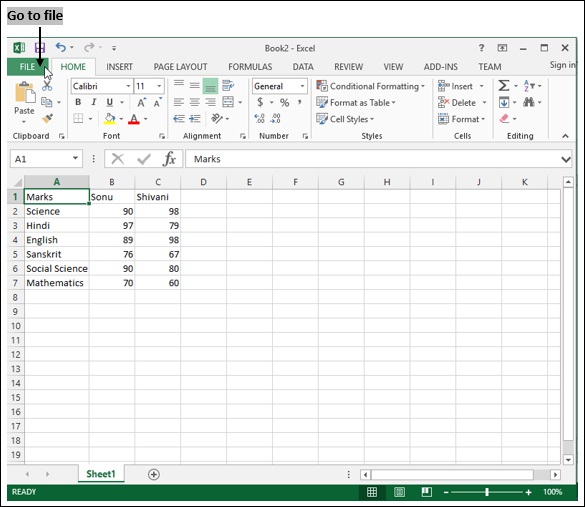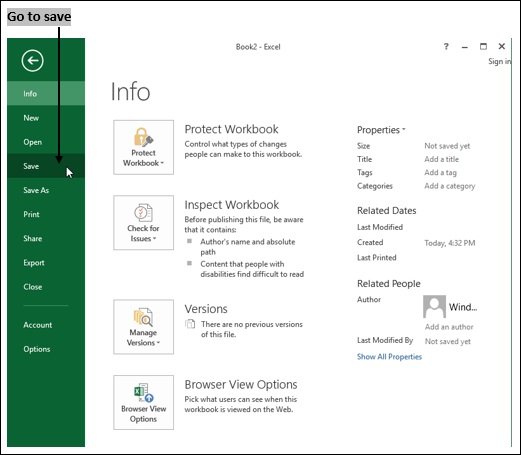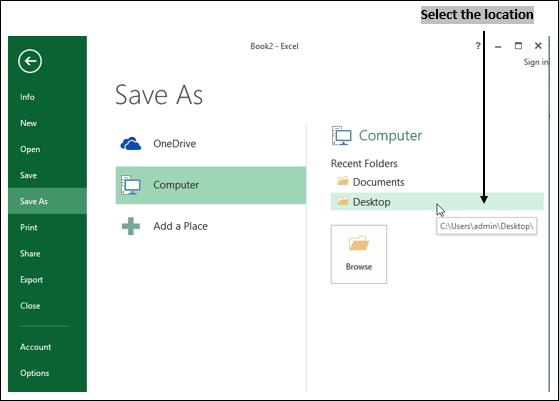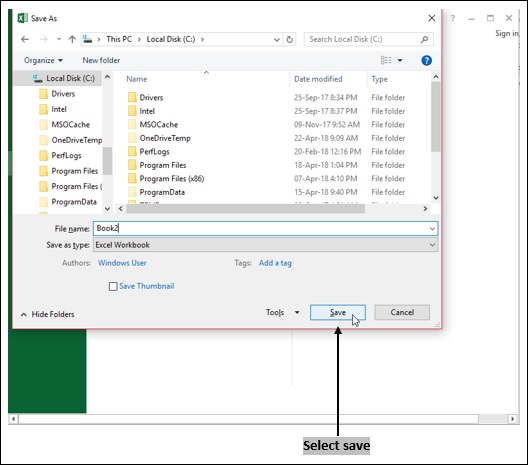
- Computer Concepts - Home
- Introduction to Computer
- Introduction to GUI based OS
- Elements of Word Processing
- Spread Sheet
- Introduction to Internet, WWW, Browsers
- Communication & Collaboration
- Application of Presentations
- Application of Digital Financial Services
- Computer Concepts Resources
- Computer Concepts - Quick Guide
- Computer Concepts - Useful Resources
- Computer Concepts - Discussion
Elements of Electronic Spread Sheet
In this section, we shall learn the topics explaining the entire concepts related to spread sheet in detail, i.e., Elements of an electronic spread sheet, manipulation of cells, functions and charts.
Opening a Spread Sheet
To open a spreadsheet, we have to click on "Start" button and go to "All Programs" and "Excel".
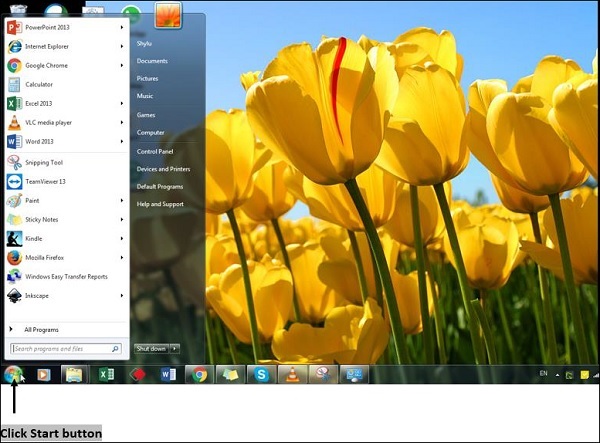
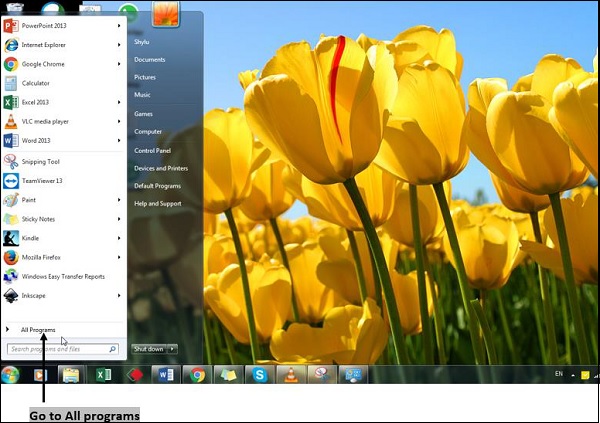
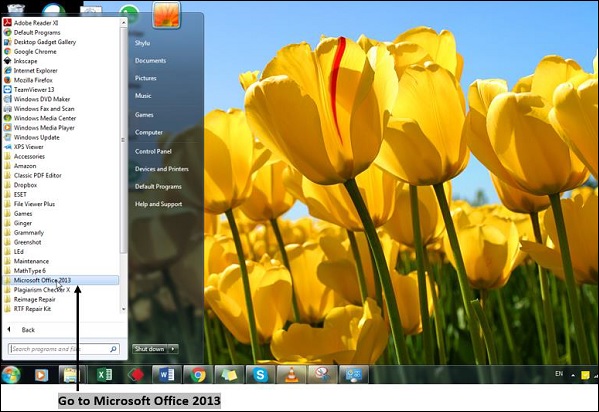
Opening an existing worksheet
To open an existing document, go to file menu, File → Open → Recent workbooks.
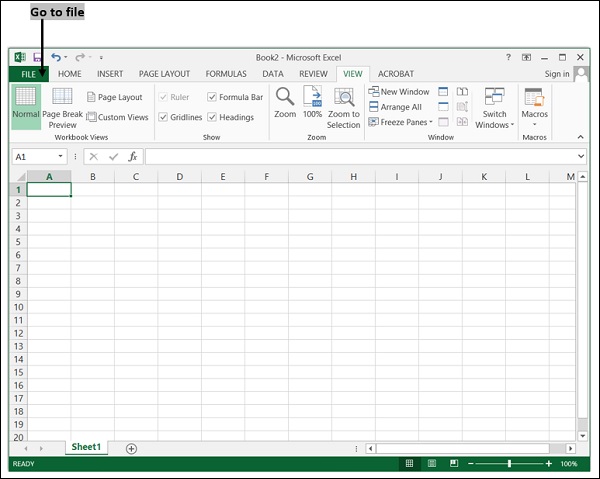
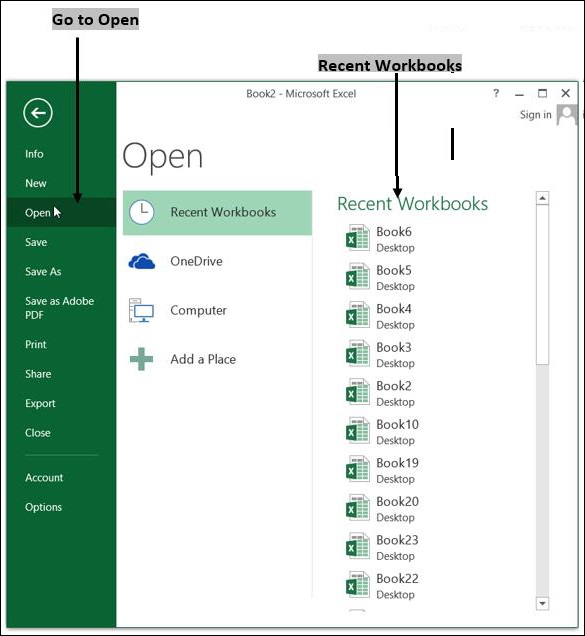
Renaming a work sheet
Every sheet is given a name by default as sheet 1, sheet 2, etc. It is necessary to customize the name according to user reference. To change this name, right click on sheet tab that is to be renamed. Name in the sheet tab gets highlighted and can be edited.
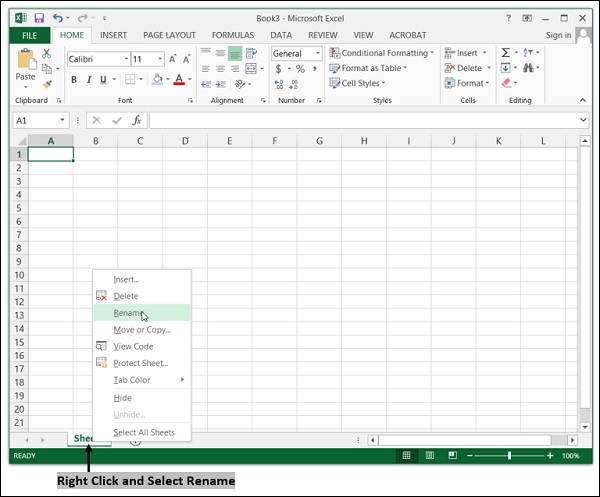
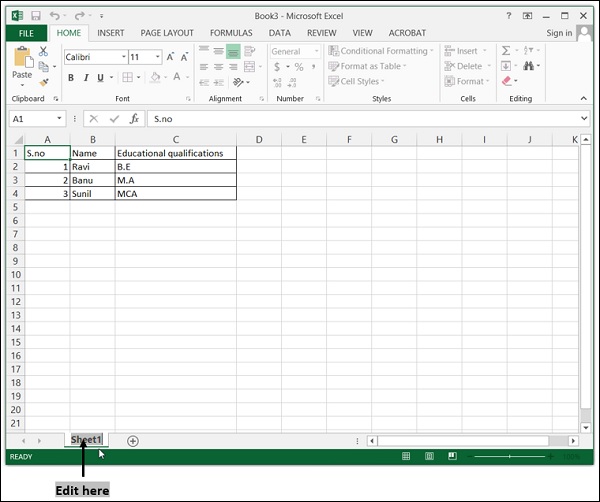
Organization of worksheet
Spreadsheet is made up of number of books. Each book contains number of columns and rows. Rows and columns are made of many cells. The cell pointer in cell A1 is as shown the below −
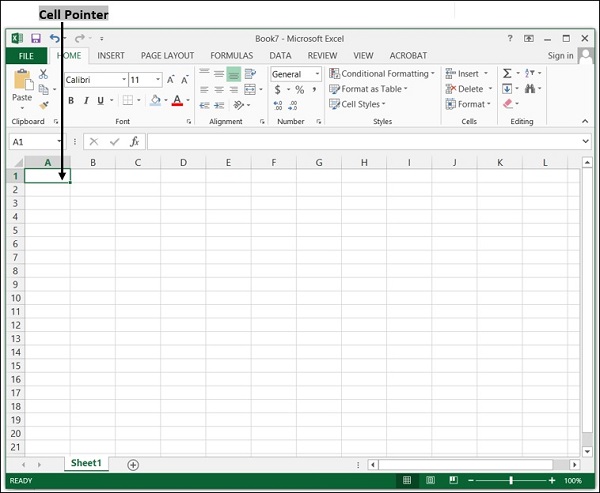
Cell Address
Cell is a small unit in the worksheet which is used to store data. A cell is refered by its column and row number.
Example
Cell B followed by row 6 is called as B6. Each cell in worksheet has a unique address. Using arrow keys in the keyboard, we can move from one cell to another cell.
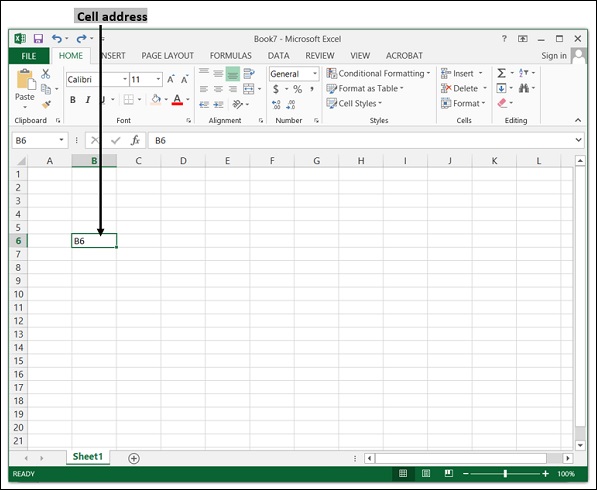
Title bar
Title bar displays the name of excel worksheet. It appears at the top of all window programs. By default, excel opens with the name Book 1.
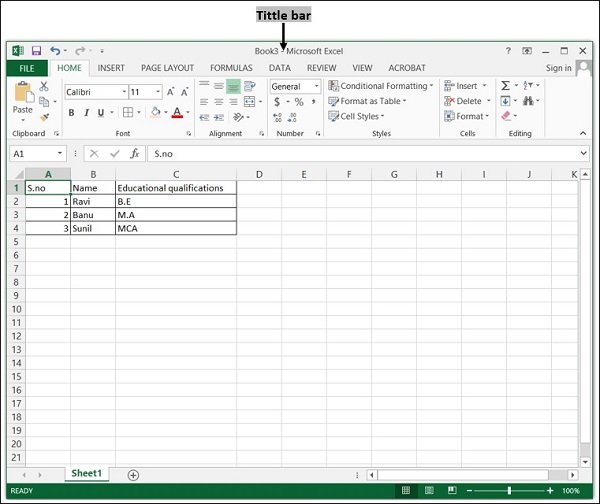
Menu bar
Menu bar is located directly below the title bar. It displays a list of menus that can be used to give commands to excel. Clicking on a menu bar displays a drop down menu of icons. You can move across the menu bar and scroll down menus with your mouse by highlighting one of the menu items and using arrow keys on your keyboard.
File − It has options such as: save, save as, open a new document, print, etc.
Home − It has icons to change font size, style, alignment, borders, etc.
Insert − It has icons to insert table, chart, pictures, screenshot, header, footer, etc.
Page Layout − It has icons to set margins, orientation, size, breaks, indent, etc.
Formulas − It has insert function, auto sum, date and time, lookup and reference, etc.
Data − It has icons to import data from web, from access, refresh all, from other sources, etc.
Review − It has icons for spelling and grammar check, thesaurus, word count, etc.
View − It has icons to zoom, print layout, switch windows, split, etc.
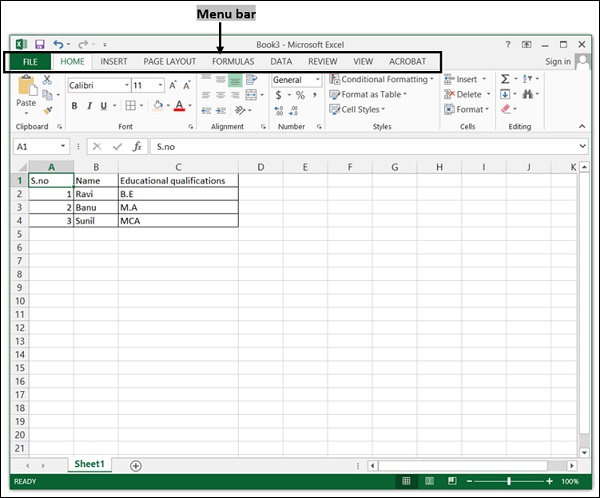
Formula bar
Cell content can be edited directly in the cells or in formula bar. If cell contains a formula, it will be displayed here. If there is no formula, then content of the cell is displayed. Formula bar allows you to view, enter and delete data in a selected cell.
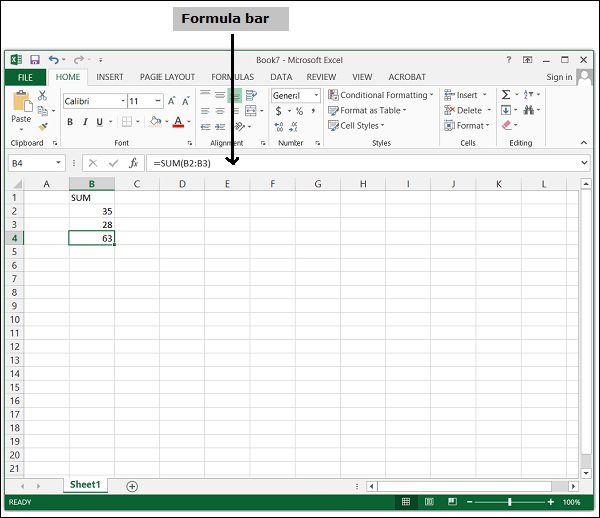
Mathematical formula appears in the formula bar when a cell that includes a formula is selected in the worksheet. In the below example, formula to calculate average grades is in cell E5. When E5 is selected, formula appears in the formula bar.
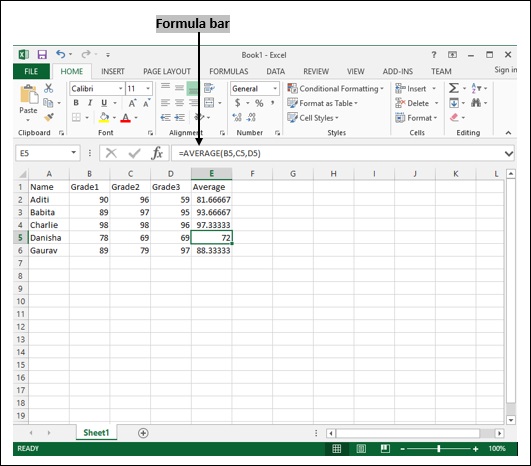
Printing a Spread Sheet
Printing is creating a hard copy of any content. A spreadsheet can be printed by selecting File → Print option. Shortcut to print is "Ctrl + P".
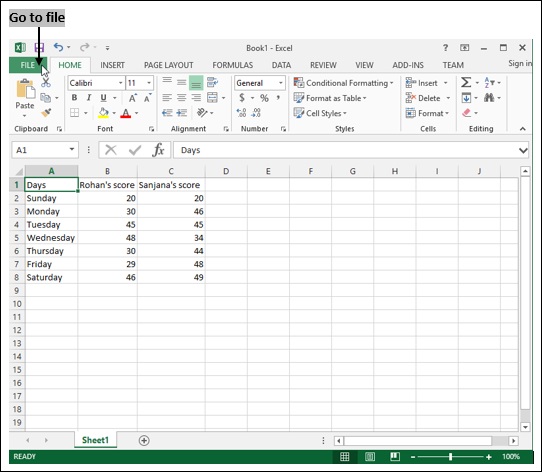

Saving Workbooks
After typing our content in excel worksheet, we must save the worksheet for future use. Shortcut key to save is "Ctrl + S". The process of saving consists of following steps −
- Click File menu.
- Click Save option from sub menu.
